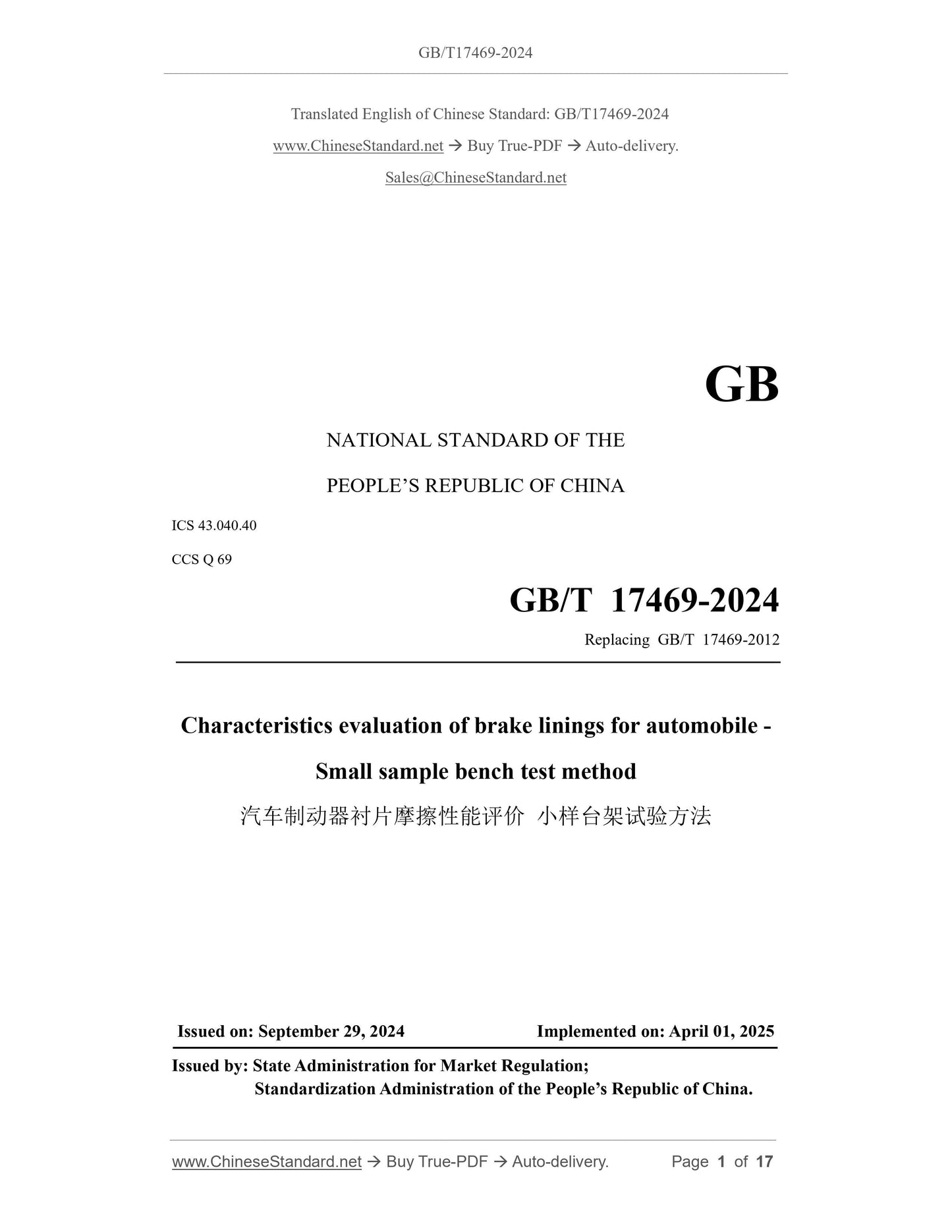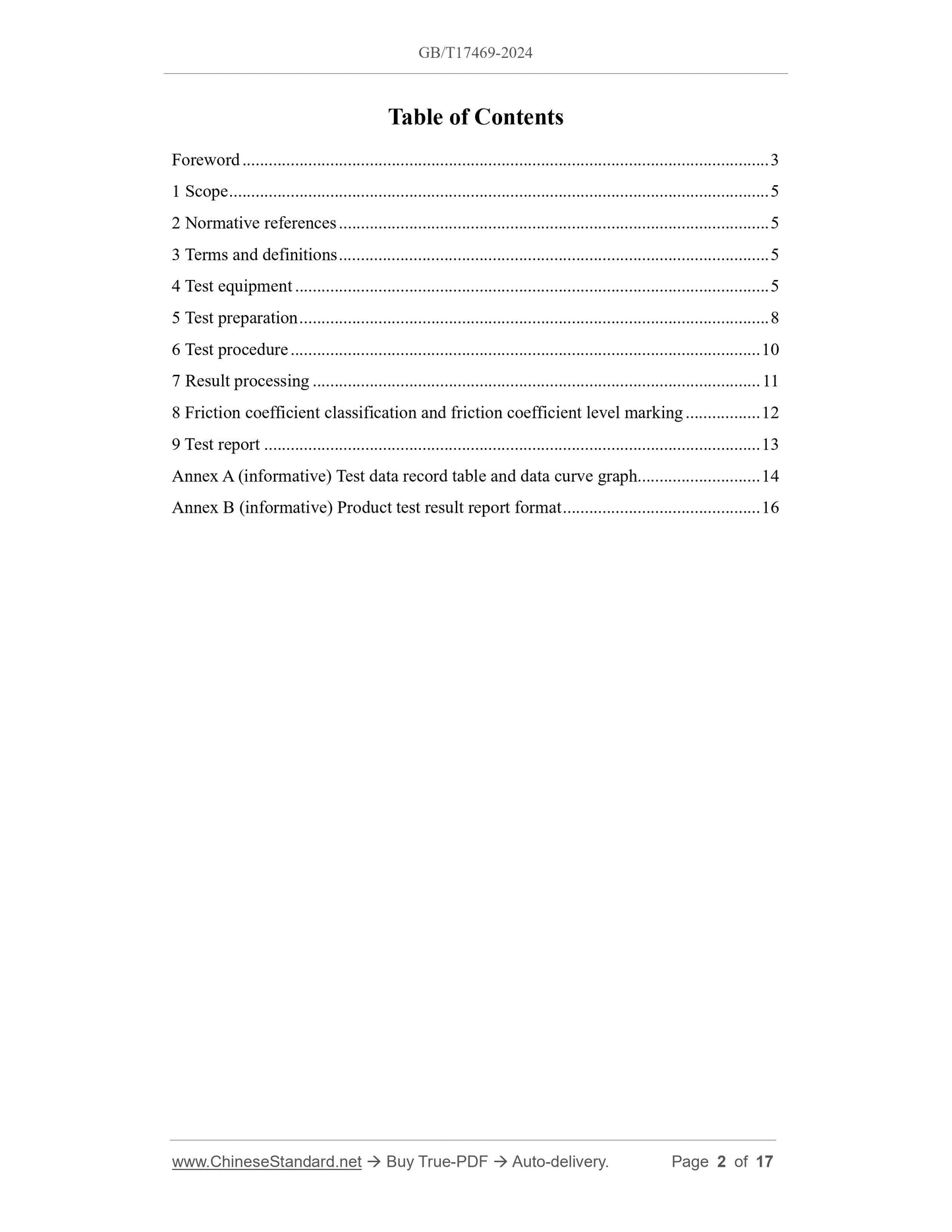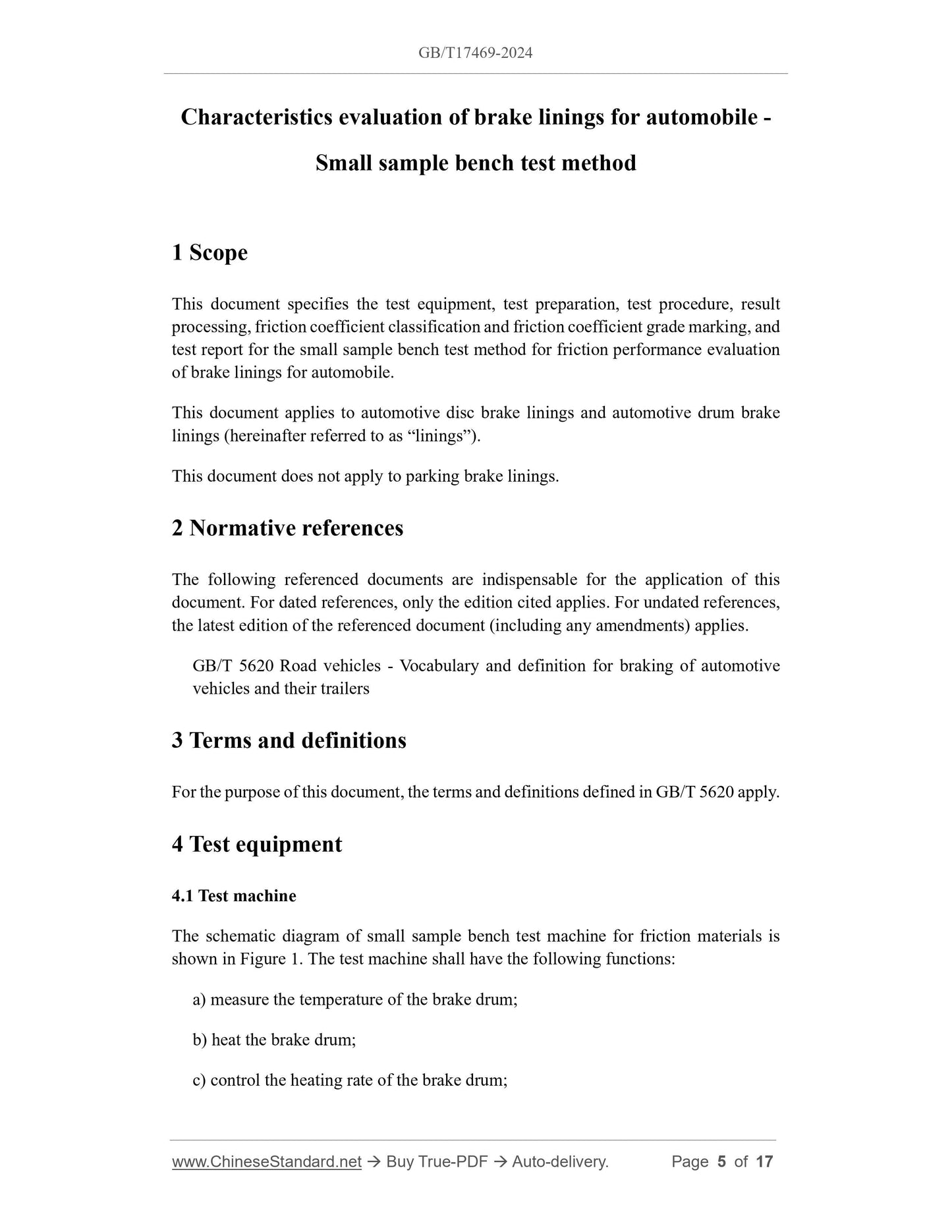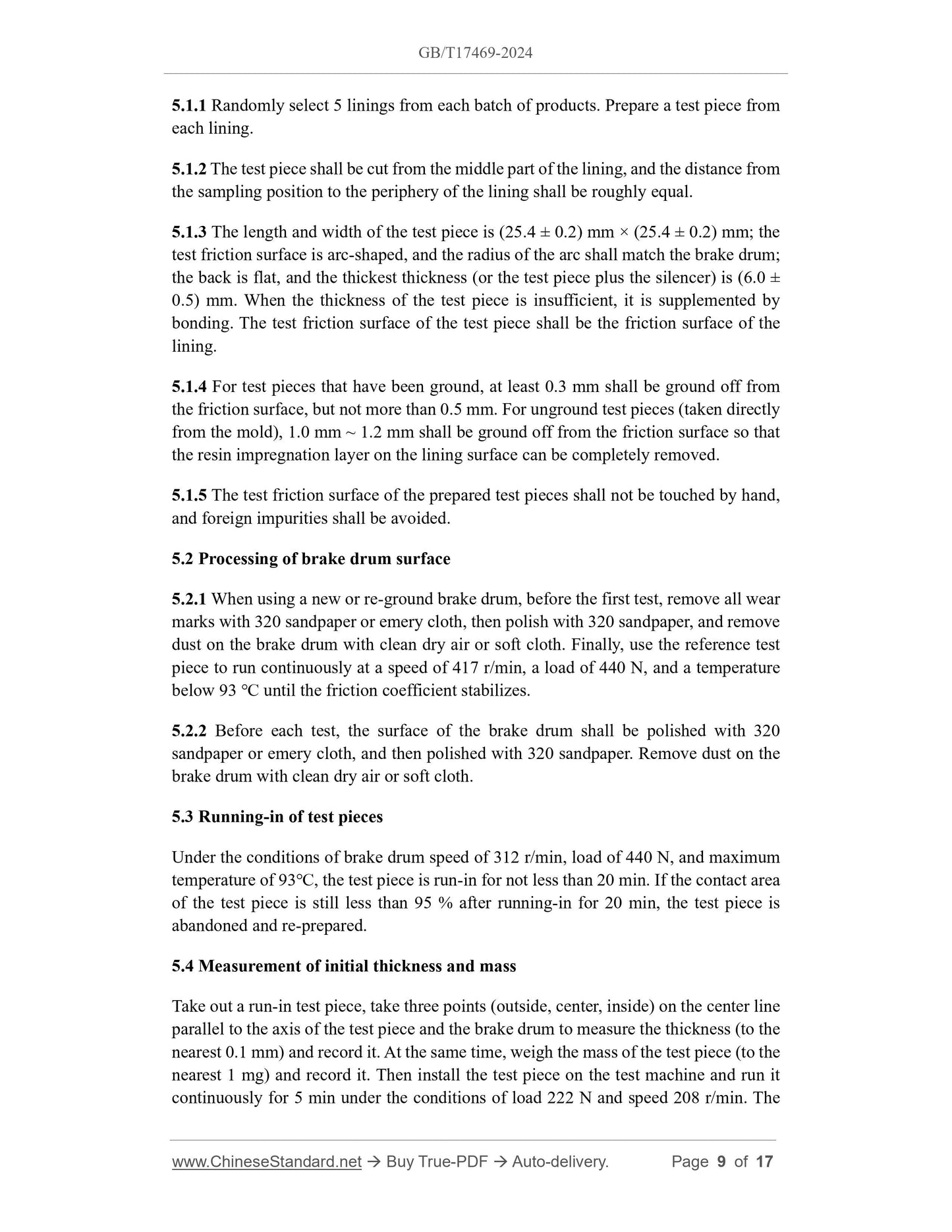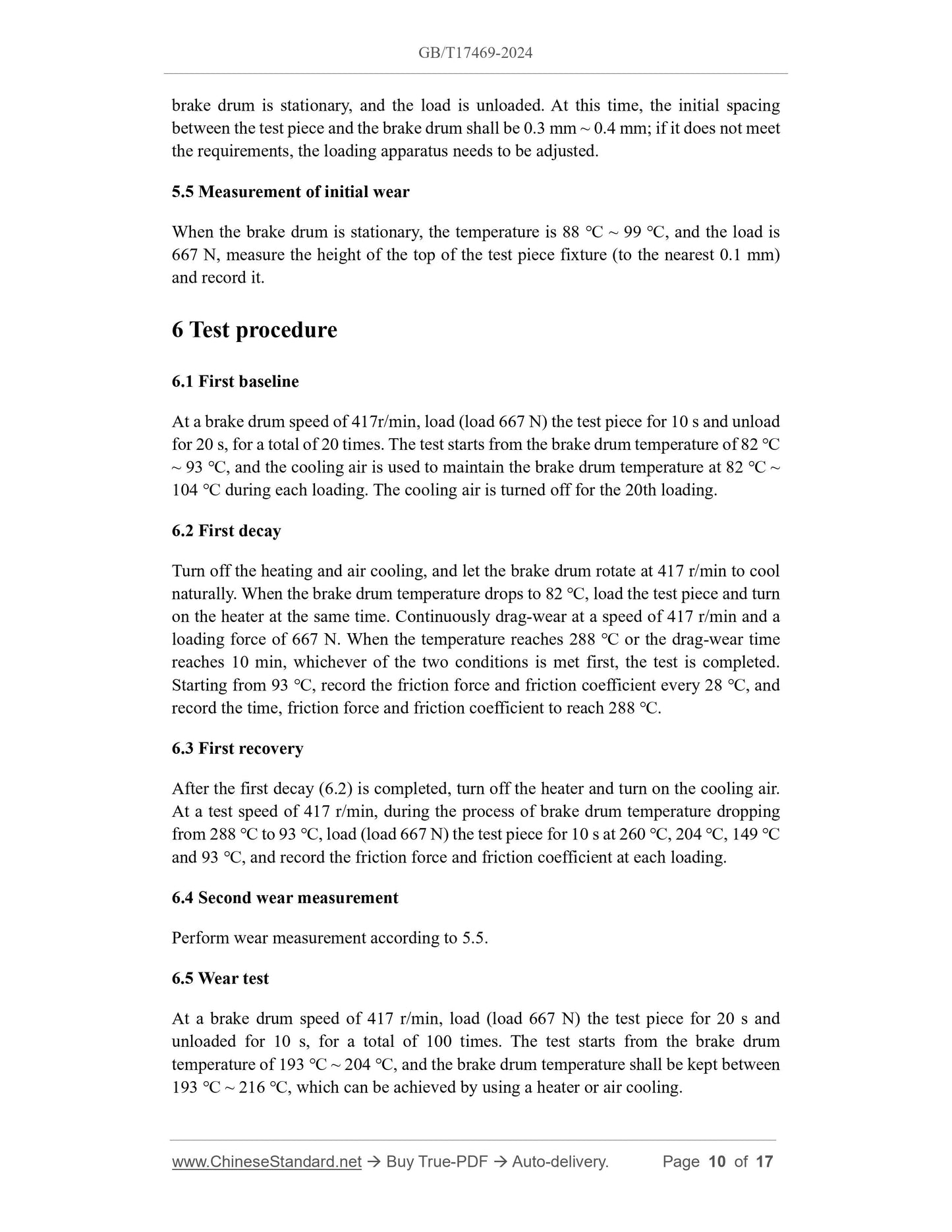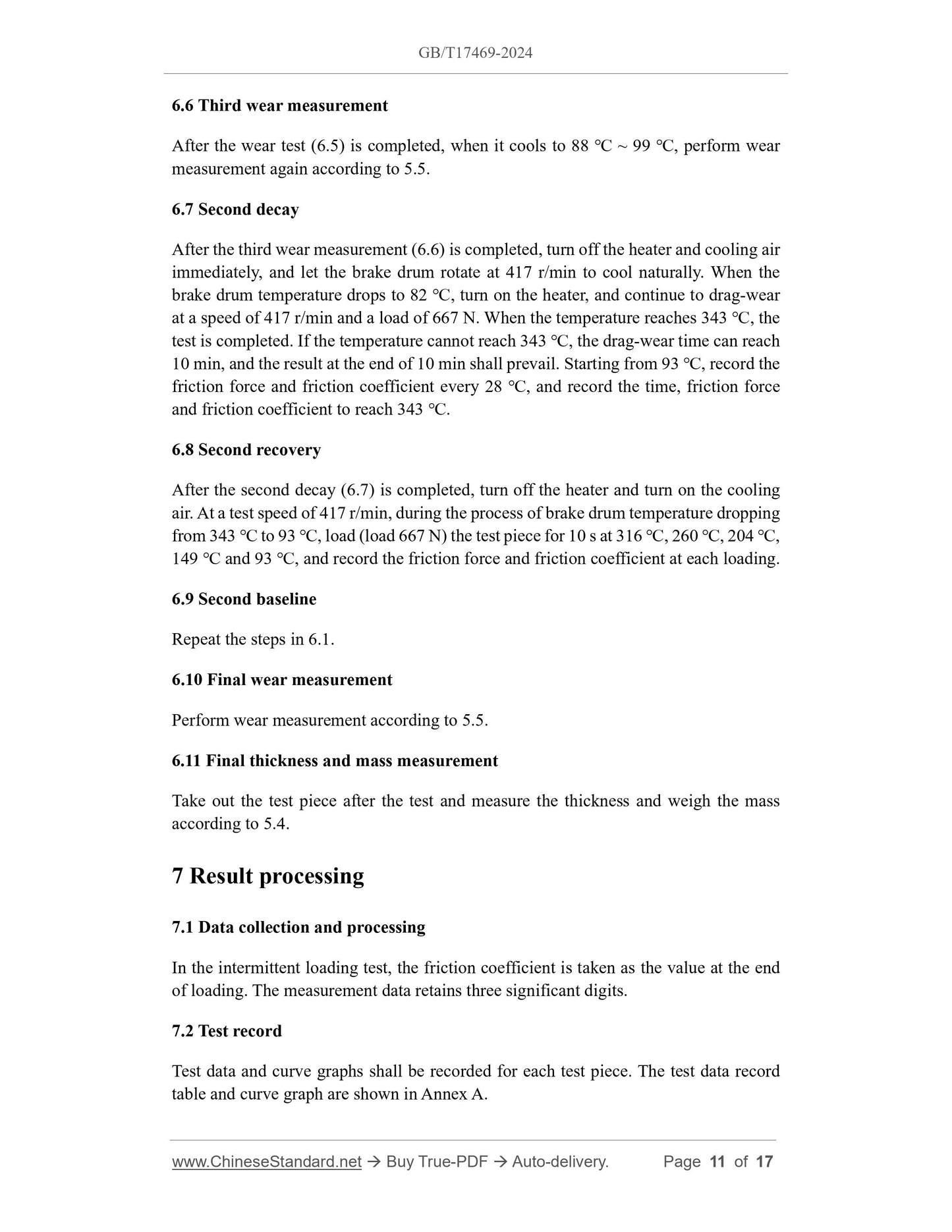1
/
of
6
www.ChineseStandard.us -- Field Test Asia Pte. Ltd.
GB/T 17469-2024 English PDF (GB/T17469-2024)
GB/T 17469-2024 English PDF (GB/T17469-2024)
Regular price
$275.00
Regular price
Sale price
$275.00
Unit price
/
per
Shipping calculated at checkout.
Couldn't load pickup availability
GB/T 17469-2024: Characteristics evaluation of brake linings for automobile - Small sample bench test method
Delivery: 9 seconds. Download (and Email) true-PDF + Invoice.Get Quotation: Click GB/T 17469-2024 (Self-service in 1-minute)
Newer / historical versions: GB/T 17469-2024
Preview True-PDF
Scope
This document specifies the test equipment, test preparation, test procedure, resultprocessing, friction coefficient classification and friction coefficient grade marking, and
test report for the small sample bench test method for friction performance evaluation
of brake linings for automobile.
This document applies to automotive disc brake linings and automotive drum brake
linings (hereinafter referred to as “linings”).
This document does not apply to parking brake linings.
Basic Data
| Standard ID | GB/T 17469-2024 (GB/T17469-2024) |
| Description (Translated English) | Characteristics evaluation of brake linings for automobile - Small sample bench test method |
| Sector / Industry | National Standard (Recommended) |
| Classification of Chinese Standard | Q69 |
| Classification of International Standard | 43.040.40 |
| Word Count Estimation | 14,169 |
| Date of Issue | 2024-09-29 |
| Date of Implementation | 2025-04-01 |
| Older Standard (superseded by this standard) | GB/T 17469-2012 |
| Issuing agency(ies) | State Administration for Market Regulation, China National Standardization Administration |
Share
